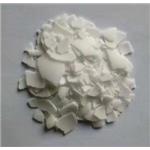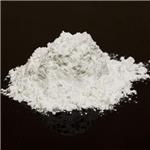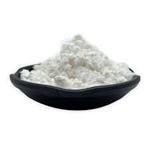- Benzophenone
-

- $0.00 / 25KG
-
2024-04-25
- CAS:119-61-9
- Min. Order: 1KG
- Purity: 99.5%
- Supply Ability: 500mt
- Benzophenone
-

- $0.00 / 1G
-
2024-04-25
- CAS:119-61-9
- Min. Order: 1G
- Purity: 99%
- Supply Ability: 20
- Benzophenone
-

- $30.00 / 1kg
-
2024-04-22
- CAS:119-61-9
- Min. Order: 1kg
- Purity: 98%
- Supply Ability: 2000kg
Related articles - Is Benzophenone polar or non-polar?
- Benzophenone is frequently used in the chemical industry as a flavoring agent, a fragrance enhancer, a UV-light protectant in ....
- Dec 21,2023
- A cosmetic additive-Benzophenone
- Benzophenone (BP) is an ultraviolet filter (UVF) widely used in personal care products such as sunscreens and cosmetics.
- Dec 7,2023
|
| | Benzophenone Chemical Properties |
| Melting point | 47-51 °C (lit.) | | Boiling point | 305 °C (lit.) | | density | 1.11 | | vapor density | 4.21 (vs air) | | vapor pressure | 1 mm Hg ( 108 °C) | | FEMA | 2134 | BENZOPHENONE | | refractive index | 1.5893 | | Fp | >230 °F | | storage temp. | Store below +30°C. | | solubility | ethanol: soluble100mg/mL, clear, colorless (80% ethanol) | | form | Crystalline Powder or Flakes | | color | White to off-white | | Odor | Characteristic. | | Odor Type | balsamic | | Water Solubility | insoluble (<0.1 g/100 mL at 25 ºC) | | JECFA Number | 831 | | Merck | 14,1098 | | BRN | 1238185 | | Dielectric constant | 13.0(20℃) | | Stability: | Stable. Incompatible with strong oxidizing agents, strong reducing agents. Combustible. | | InChIKey | RWCCWEUUXYIKHB-UHFFFAOYSA-N | | LogP | 3.18 at 25℃ | | CAS DataBase Reference | 119-61-9(CAS DataBase Reference) | | IARC | 2B (Vol. 101) 2013 | | NIST Chemistry Reference | Benzophenone(119-61-9) | | EPA Substance Registry System | Benzophenone (119-61-9) |
| | Benzophenone Usage And Synthesis |
| description | Diphenyl ketone [119-61-9], benzophenone, C6H5COC6H5, C13H10O, Mr 182.22. The stable form of diphenyl ketone consists of colorless rhombic prismatic crystals. Several unstable forms with lower melting points also exist. Diphenyl ketone is insoluble in water and readily soluble in organic solvents. Diphenyl ketone and substituted diphenyl ketones in particular are used mainly as photoinitiators for UV-curable printing inks and coatings. Diphenyl ketone is also used as an intermediate for pharmaceuticals and agricultural chemicals. It is employed in the perfume industry as a fixative and as a fragrance with a flowery note. | | Chemical Properties | Shiny white prismatic crystals with a sweet taste, smell like a rose, melting point is 47-49 ℃, boiling point is 306 ℃, insoluble in water, soluble in alcohol, ether and chloroform.
| | application | Sunscreen cosmetics is the hot new products of cosmetics, almost all sunscreens contain benzophenone compound on the current market. Benzophenone compounds that protect the skin from harm, often is used to produce high product. In recent years, the cosmetics consumption of benzophenone grows continuesly. Recent studies suggest that fluorescence is also a harmful ultraviolet light source, so benzophenone expands the range of applications in the field of cosmetics, it has been extended to hair conditioners, lotions and lipsticks. In addition, the perfume fixative agent also can give spice sweet flavor, is used in many perfumes and soap flavor.
Banana Boat company has developed a UVA ultraviolet-absorbing technology called AvoTriplex, which is benzophenone-based, adding a stabilizer to prevent the benzophenone from breaking down in the sun. Enhancer is also added into the formula, and stabilizer may act synergistically, to optimize benzophenone sunscreen capacity.
| | Uses |
- Benzophenone Mainly used for the preparation of vanilla, butter and other flavor,It can be used as a fixative agent. Its weak sweet bay leaves fragrant , can be widely used in low-grade flavors, such as roses, bay leaves, sweet curd, shy flower, lily of the valley, sunflower, orchid, hawthorn flowers, incense and Wei Oriental flavor and other flavors. It is also used as an antioxidant in soaps, and occasionally used for almonds, berries, fruit, butter, nuts, peaches, vanilla beans and other food flavors in trace amount.
- Uses for photosensitive resins, coatings and adhesives.
- Benzophenone is an intermediate of UV absorbers, organic pigments, pharmaceuticals, perfume, insecticide . It is used for the production of bicyclic Piperidine Benztropine hydrobromide, diphenhydramine hydrochloride in the pharmaceutical industry . The product itself is a styrene polymerization inhibitor and a perfume fixative. Giving sweet taste to flavors, it is used in many perfumes and soap flavors.
- It is commonly used in soap flavor, used in ultraviolet absorbers, pigments, pharmaceuticals and reagents production, and also is low temperature fast curing agent for fluorine rubber. It serves to manufacturers to package the product in clear glass or plastic.
- Benzophenone is widely employed as a photo initiator in UV-curing applications such as inks, imaging and clear coatings in the printing industry. It acts as a UV blocker to prevent photo-degradation of the packaging polymers or its contents.
- It is light initiator for UV products, pharmaceutical intermediates, fragrances, light stabilizers etc.
- It is light pigment, medicine, perfume, pesticides intermediates, it can also be used for UV-curable resins, inks and coatings initiator.
| | indicator | Benzophenone is widely used in the synthesis experiment as an indicator, it can be used as a indicator while handling toluene, benzene, THF, acetonitrile ect.; if there is a beautiful blue after added, it can be distillated and used, it is the best to kept in sodium, but the reason of generating blue is still a puzzle.
Here is the reason from a foreign book about reactions mechanism : a radical anion generated by the one called carbonyl radical, benzophenone acts as the indicator is that benzophenone oxygen atoms in sodium capture electrons to generate dark blue carbonyl radical; the radicals perspective on the electrical aspect is stable, mainly used to indicate 'anaerobic conditions',Widely used.
After the addition of benzophenone, more blue of the solution, indicating less oxygen in the solution, indirectly instructing the little water. However, whether the solution turns blue, is related to the added amount of benzophenone and processing solvent, THF (300ml) contains lots of water, and needs more than about 6 hours to reflux, and of course, it is related to the amount of processing solvent, the more the longer, toluene , benzene and other samples containing less aqueous need less reflux time, it is best to add the common desiccants to pretreat, such as: potassium carbonate, sodium sulfate, sodium hydroxide, etc., so that the processing time will be shortened. | | Toxicity | GRAS(FEMA)。
LD502897mg/kg(Mice, orally)。
| | Production method | There are different methods for synthesizing benzophenone. One method involves condensing benzyl chloride and benzene, followed by oxidation with nitric acid. Another method involves condensing benzene and carbon tetrachloride, followed by hydrolysis. In laboratory production, benzophenone is typically synthesized using aluminum chloride as a catalyst, with benzene reacting with benzoyl chloride. The final method involves condensing benzene and benzoyl chloride in the presence of aluminum chloride, followed by crystallization from ethanol. | | Description | Benzophenone is a combustible, white,crystalline solid with a rose-like odor. Molecularweight=182.23; Specific gravity (H2O:1) = 1.085 at 50℃;Boiling point = 305℃; Freezing/Melting point = 48.5℃;Latent heat of vaporization=2.93 3 105 J/kg; Heat ofcombustion= -358 3 105 J/kg. Hazard Identification(based on NFPA-704 M Rating System): Health 1,Flammability 1, Reactivity 0. Insoluble in water. | | Chemical Properties | Benzophenone is a combustible, white, crystalline solid with a rose-like odor. soluble in ethanol, ether, chloroform and other organic solvents and monomers, insoluble in water. It is a free radical photoinitiator, mainly used in free radical UV curing systems, such as coatings, inks, adhesives, etc. It can be prepared in several ways, for example, by Friedel–Crafts reaction of benzene and benzoyl chloride with aluminum chloride, or of benzene and carbon tetrachloride, and oxidation of diphenylmethane. | | Occurrence | Benzophenone has been found in various fruits, including Vitis vinifera L., black tea, cherimoya (Annona cherimola), mountain papaya (Carica pubescens), and soursop (Annona muricata L.). | | Uses | Benzophenone is used as a synthetic intermediate
for manufacture of pharmaceuticals and agricultural chemicals.
It is also used as a photoinitiator in UV-curable printing
inks, as a fragrance in perfumes, as a flavor enhancer
in foods. Benzophenone can be added as a
UV-absorbing agent to plastics, lacquers, and coatings at concentrations
of 2–8%. | | Production Methods | Benzophenone is commercially synthesized by the atmospheric
oxidation of diphenylmethane using a catalyst of
copper naphthenate. Alternatively, it can be produced by a
Friedel–Crafts acylation of benzene using either benzoyl
chloride or phosgene in the presence of aluminum chloride
. | | Definition | ChEBI: Benzophenone is the simplest member of the class of benzophenones, being formaldehyde in which both hydrogens are replaced by phenyl groups. It has a role as a photosensitizing agent and a plant metabolite. | | Synthesis Reference(s) | Tetrahedron Letters, 36, p. 2285, 1995 DOI: 10.1016/0040-4039(95)00191-E
Chemical and Pharmaceutical Bulletin, 34, p. 3595, 1986 DOI: 10.1248/cpb.34.3595 | | General Description | Benzophenone(119-61-9) appears as white solid with a flowery odor. May float or sink in water. It is a widely used building block in organic chemistry, being the parent diarylketone. | | Air & Water Reactions | Insoluble in water. | | Reactivity Profile | Ketones, such as Benzophenone, are reactive with many acids and bases liberating heat and flammable gases (e.g., H2). The amount of heat may be sufficient to start a fire in the unreacted portion of the ketone. Ketones react with reducing agents such as hydrides, alkali metals, and nitrides to produce flammable gas (H2) and heat. Ketones are incompatible with isocyanates, aldehydes, cyanides, peroxides, and anhydrides. They react violently with aldehydes, HNO3, HNO3 + H2O2, and HClO4. Benzophenone can react with oxidizing materials. | | Health Hazard | Ingestion causes gastrointestinal disturbances. Contact causes eye irritation and, if prolonged, irritation of skin. | | Fire Hazard | Flash point data for Benzophenone are not available, but Benzophenone is probably combustible. | | Contact allergens | Unsubstituted benzophenone is largely used in chemical
applications. It acts as a marker for photoallergy to
ketoprofen. | | Safety Profile | Moderately toxic by ingestion andintraperitoneal routes. Combustible when heated.Incompatible with oxidizers. When heated todecomposition it emits acrid and irritating fumes. | | Potential Exposure | Benzophenone is used in UV curing
of inks and coatings; as an intermediate; as an odor fixative
in fragrances, flavoring, soaps; in the manufacture of pharmaceuticals
and insecticides; in organic syntheses. | | First aid | If this chemical gets into the eyes, remove anycontact lenses at once and irrigate immediately for at least15 min, occasionally lifting upper and lower lids. Seekmedical attention immediately. If this chemical contactsthe skin, remove contaminated clothing and wash immediately with soap and water. Seek medical attention immediately. If this chemical has been inhaled, remove fromexposure, begin rescue breathing (using universal precautions, including resuscitation mask) if breathing hasstopped and CPR if heart action has stopped. Transferpromptly to a medical facility. When this chemical hasbeen swallowed, rinse mouth and get medical attention. | | Carcinogenicity | Lifetime dermal carcinogenicity
studies in mice and rabbits did not show any tumor excess
in the treated animals. Female Swiss mice and
New Zealand White rabbits of both sexes were treated dermally
with 0, 5, 25, or 50% of benzophenone (0.02 mL) twice
a week for 120 or 180 weeks. Weekly examination of the
rabbits did not reveal any reduction in survival or appearance
of tumors. Mice treated with benzophenone did not show any
excess in the number of tumor-bearing animals or in total
number of tumors compared to untreated control animals.
Although three skin tumors were observed in the benzophenone-
treated mice (one case of squamous cell carcinoma and
two cases of squamous cell papilloma), there were also three
tumors (one carcinoma and toe papillomas) observed in the
control animals. | | Metabolism | Benzophenone's main metabolic pathway in the rabbit is by reduction to benzhydrol, which is excreted conjugated with glucuronic acid(Williams, 1959). | | storage | Color Code—Green: General storage may be used.Store in a cool, well-ventilated area away from sources ofignition and incompatible materials. | | Shipping | UN1224 Ketones, liquid, n.o.s., Hazard Class: 3;
Labels: 3—Flammable liquid, Technical Name Required.
UN3077 Environmentally hazardous substances, solid, n.o.s.,
Hazard class: 9; Labels: 9—Miscellaneous hazardous material,
Technical Name Required. | | Purification Methods | Crystallise it from MeOH, EtOH, cyclohexane, *benzene or pet ether, then dry in a current of warm air and store it over BaO or P2O5. It is also purified by zone melting and by sublimation [Itoh J Phys Chem 89 3949 1985, Naguib et al. J Am Chem Soc 108 128 1986, Gorman & Rodgers J Am Chem Soc 108 5074 1986, Ohamoto & Teranishi J Am Chem Soc 108 6378 1986, Naguib et al. J Phys Chem 91 3033 1987]. [Beilstein 7 III 2048, 7 IV 1357.] | | Incompatibilities | Oxidizing materials, such as dichromates
and permanganates. |
| | Benzophenone Preparation Products And Raw materials |
|